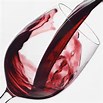 It doesn’t have to be a holiday for certain drinks and foods to cause permanent and unsightly stains in the most visible spot on your carpet. However you did have a Christmas party, somebody spilled red wine on your gorgeous white Saxony and now what?
It doesn’t have to be a holiday for certain drinks and foods to cause permanent and unsightly stains in the most visible spot on your carpet. However you did have a Christmas party, somebody spilled red wine on your gorgeous white Saxony and now what?
In most cases stains are absorbed over time so cleaning the stain while still fresh is important. This would apply to your “stain resist” Nylon, Olefin and PPT (aromatic polyesters) carpets. These types of carpets account for more than 85% of the residential carpet being sold today so don’t despair. If it spilled on your fine wool or Oriental rug then you might be in for a bigger challenge. Dry red stains can be tough too but chemistry has evolved and can work a few wonders.
Red Grape Wine contains tannin which can be tricky to remove along with beer and other alcoholic beverages. Tannin is a naturally occurring vegetable dye found in the leaves, barks, stalks and skins of certain plants and found in drinks like Coffee, Colas, Fruit Juices and Tea to name a few.
The following steps can be used remove tannin stains. Always consult your carpet’s warranty and cleaning recommendations prior to using anything stronger than a mild detergent. Always blot and never rub.
- Blot fresh spills with a an absorbent white towel to extract any excess liquid
- Use a quality carpet, laundry or dish detergent and a clean white towel to spot clean the area
- Thoroughly rinse the area with a mix of half water and half white vinegar and blot excess liquid
- Rinse with plain water, blot and dry thoroughly
- If stain still exists then use a tannin stain remover (acid based cleaning agent) following the manufacturer’s instructions.
If the stain still remains there are still options, however I suggest calling a professional carpet cleaner at this point. A true professional will have access to a wide range of cleaning agents, will be able to properly assess the problem and then suggest the next course of action. This might include oxidizers, reducers or other chemical treatments that can seriously affect the color dye.